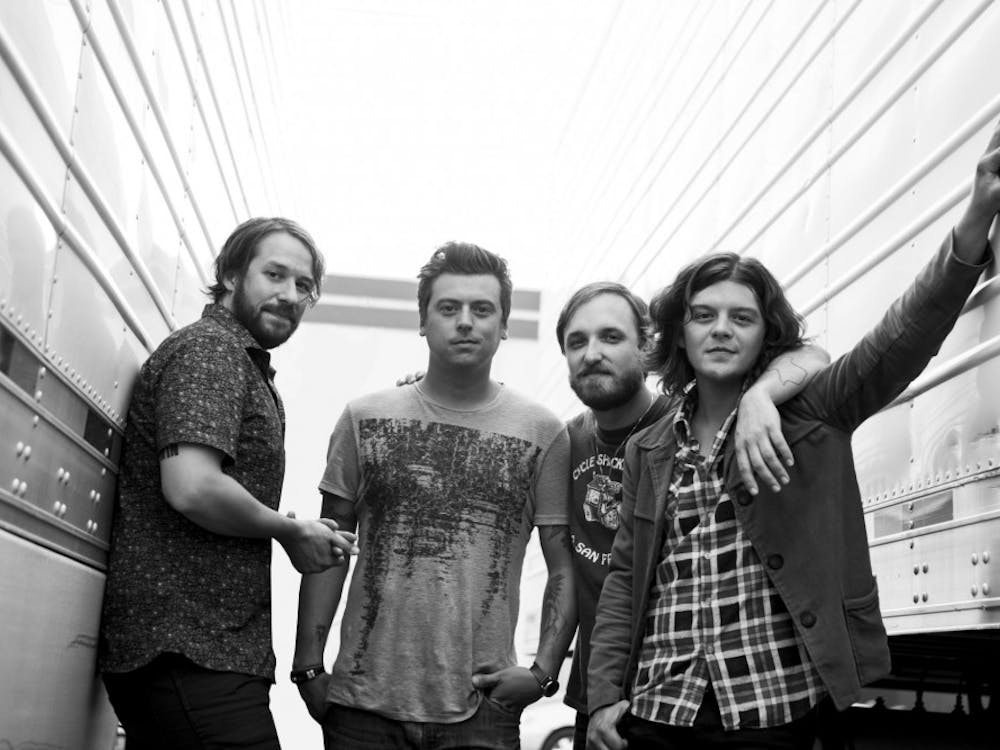By Aaron O'Connell
The administration knows, better than anyone, the need for new workout facilities.
"The long and short of it is, (Howard Hall) is an inadequate facility for students and staff," the Rev. Thomas Doyle, C.S.C. said. "And it's been inadequate for decades."
Weeks earlier, the Rev. E. William Beauchamp, C.S.C., cast his eyes downward during a student media meeting, looking almost ashamed as he searched for the proper words to describe University's workout facility, Howard Hall. Not looking up, and with a sigh, he resigned himself to the task.
How to describe Howard Hall?
"An embarrassment," Beauchamp said.
It would be a daunting task to find a student at the University of Portland who did not believe that this description was accurate.
"It's dirty, primitive, and the facilities are just unclean," junior Dillon Paul said. "It lacks a vibrant atmosphere that promotes working out."
Paul, who avows that he enjoys physical fitness, believes that the ancient building actually discourages students from being healthy.
According to Beauchamp, Howard Hall was built in the 1920s and has not seen a major renovation in years. It was named for Archbishop Howard, who presided at the University for many years.
His legacy is now an object of odium for much of the student populous.
At one point the volleyball team held matches in the building, as did the basketball teams. But now, the novelty of the 1920s architecture has long since been rusted over.
So why has nothing been done about Howard Hall?
"The leadership, both current and previous, of the University needs to be given the benefit of the doubt when you are reviewing their decisions for a project," Doyle said.
He explained that the reason for not having newer facilities was not disregard, but rather was the result of difficult decisions made by the school in considering what was most important for students. Further, he said that a renovation would cost millions of dollars.
Now, however, it appears that a new workout center may soon be a reality, thanks in large part to a leadership gift made by Tim and Mary Boyle.
The Boyles were unavailable for comment, but Beauchamp described them in an e-mail as, "quiet people who don't like to blow their horn much."
The school is still working to raise enough money for the project, which Beauchamp and Doyle both believe to be in the neighborhood of $20 million.
Beauchamp described the process of receiving funds for a project like Howard Hall as a system where the University makes monetary requests from donors.
"You make an ask of them and say, 'Here's what we need, if it fits your interest', or (the donors) say, 'Here is what I want to give money for'," Beauchamp said.
The school currently has several requests out for over $1 million, but suspects that the funds for Howard Hall will most likely stem from a series of smaller donors.
"(The project's) future and its fate are really in the hands of our alumni and friends," Doyle said.
The new facilities will not be placed on the recently acquired Triangle Park property, although other parts of the campus may be relocated to make room for a new workout space.
But, as Doyle stressed, all of this planning and rearrangement will cost money.
"It seems that everywhere we turn it's costing us $10 million," Doyle said jokingly, but clearly frustrated by the limitations.
The University is currently working to resolve these problems, and is moving swiftly into the design stages of the operation. Doyle believes that this semester the University will engage an architect and form a committee dedicated to the project.
"Right now, this is a really important phase, asking, 'What will be in the facility?'" Doyle said.
Director of Athletics and Recreation, Larry Williams, spoke excitedly about the prospect of newer facilities, and said that students should expect a couple of basketball courts, a pool, a resistance training room and meeting room space.
Throughout the interview, Williams also stressed the importance that this project held to our administration, especially to Beauchamp.
"I know it is a high objective of the president that a new, well appointed recreation facility be built," Williams said. "He realizes the great need that we have."
According to Williams, one of the next steps in the process will be a survey of the students, as well as visits to analogous schools that have newer facilities. He hopes to ascertain what students want to see in a workout facility, as well as find out what other schools did that was successful and unsuccessful.
"We need to be thoughtful on how we do it," Williams said. "We don't want to spend money on something that isn't used."
The administration is reluctant to give any sort of timeline for the project, especially given the level of difficulty fundraising poses in the economic downturn.
But, students should certainly not hold out for newer facilities any time in the near future.
"I don't see us breaking ground while (most students) are still here," Beauchamp said.







